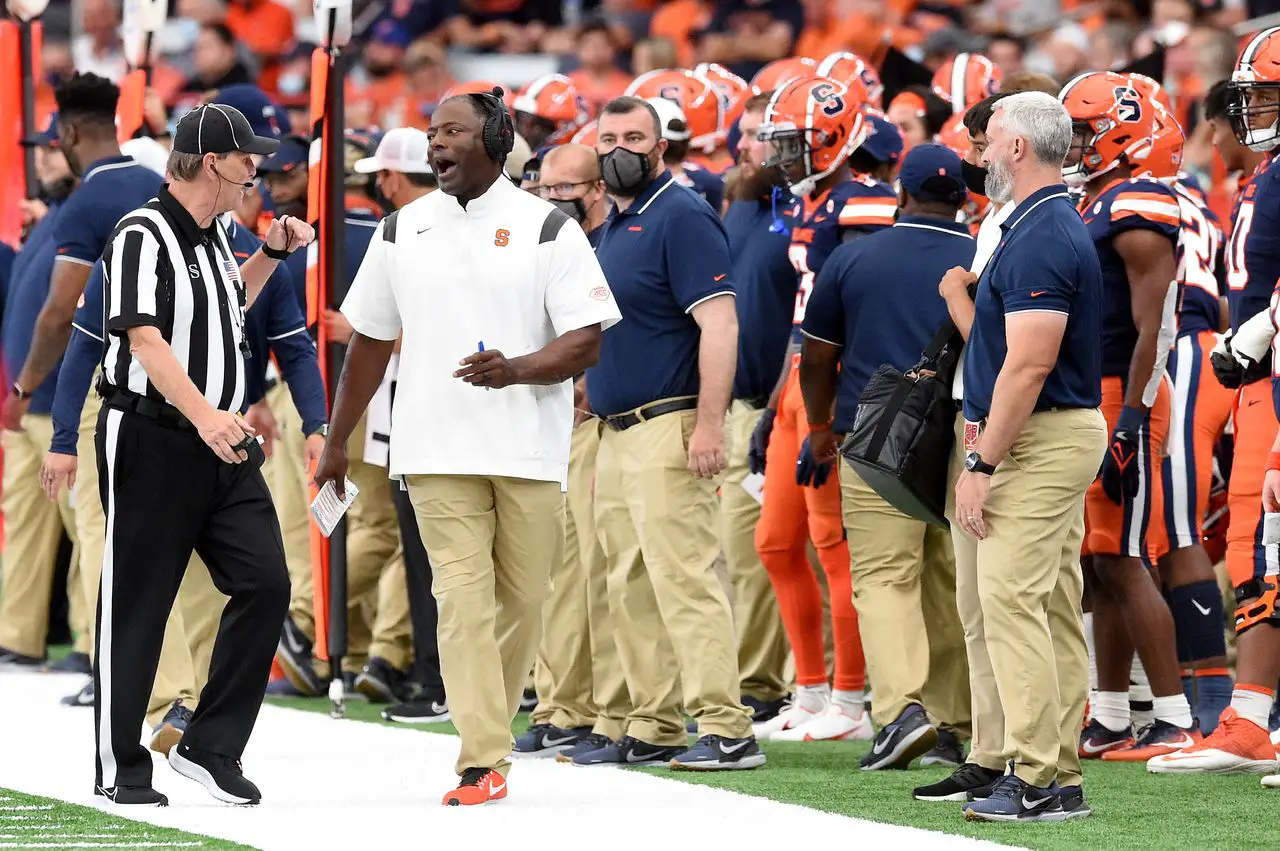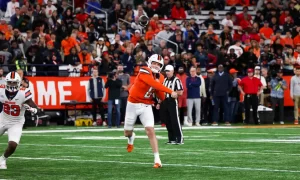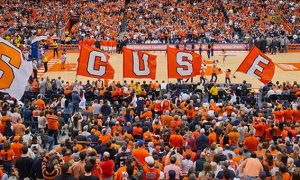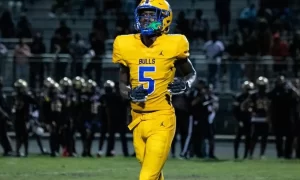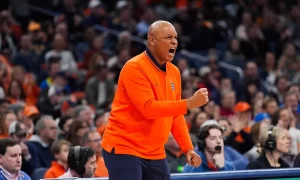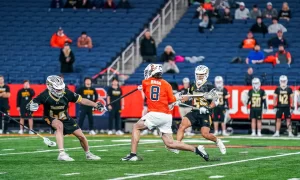In football, running a groundbreaking offensive system can take you to new heights. It can also go south quickly without proper adjustments. At this juncture of Dino Babers’ tenure at Syracuse, the latter has been occurring since the program’s bowl-win 2018 season.
It hasn’t been any clearer over the past two years than it was on Saturday when Syracuse fizzled 17-7 against a dyed-in-the-wool Big 10 doormat in Rutgers. In front of the Dome’s first home crowd since 2019 and on the 20th anniversary of 9/11, SU looked about as flat and discombobulated as they’ve ever been with Babers at the helm.
Syracuse’s 265 offensive yards and 3 turnovers were standard fare for a team that is now 7-18 since the start of 2019. Our better instincts were probably proven correct after wondering if a solid opener against Ohio (who just lost to Duquesne, by the way) meant ‘Cuse was turning some kind of corner. Rutgers plainly unmasked the same ol’ Orange. We would have gotten away with it too, if not for those meddling Power Five competitors!
On a practical level, Dino Babers is now fielding questions about what exactly his offense is doing. During Monday’s presser, Babers defended the use of “choice routes” in his offense, framing it as an internal decision between using more complex routes and “throw[ing] for maximum yardage” versus “limit[ing] [the offense] to try and be exactly right all the time” if the team cut down its route concepts. Sounds confusing, right?
Well, that may be the general problem for SU’s offense. Choice routes, for those unfamiliar, have been around in offensive football for a while. They’re routes run by receivers that place the onus on reading pre-snap coverage and adjusting on the fly as the play begins, and were popularized by the innovative run-and-shoot offense that was all the rage in the late 1980s. That system is now antiquated, but even at the time was one that required highly intelligent and diligent quarterbacks and receivers to be constantly thinking and communicating about what they were about to run. These days, defenses have gotten used to them and all the stuff ushered in by the spread offense craze, and Tommy DeVito has said as much. The element of surprise is gone.
More worryingly, Syracuse seems to be lacking such a connection between its offensive skill players, and thus Babers’ offense reeks of overcomplication. Why? It’s clearly not a question of ability. Tommy DeVito still has great arm talent, Sean Tucker is one of the better backs in the ACC, and Taj Harris is a for-real All-ACC talent at receiver. The pieces are there, but it’s up to Babers to get them all on the same page. If Saturday was any indication, they’re barely borrowing from the same library.
Not all of this is Dino‚Äôs fault, though. You‚Äôd be excused if you cut offensive coordinator Sterlin Gilbert some slack after 2020‚Äôs injury-filled opt-out extravaganza, but this past week‚Äôs loss looked suspiciously like last year’s team and one that has consistently flailed on the offensive end under his tutelage. For those keeping score at home, Syracuse is 2-11 since Gilbert was hired and has averaged 17.8 points, 168.3 passing yards, and just 273.9 offensive yards per game over that span.
This week’s matchup presents an unmistakable opportunity for SU to get it together on offense against an FCS foe in UAlbany. With a strong-looking defense already in tow, the Orange could still surprise this year if they can score points. That’s a big if, and it all depends on whether or not Dino can recalibrate his system and start fooling defenses again.


